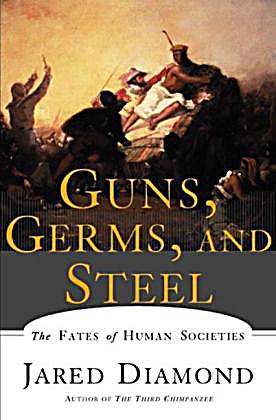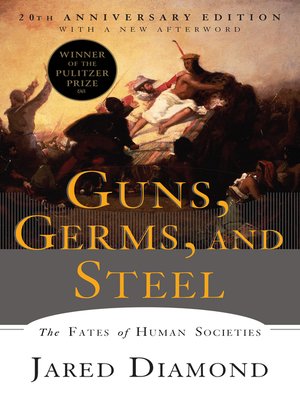



Historians are divided as to whether their craft ought to be classified as an art or a social science.

Diamond’s background is in physiology and evolutionary biology.Īnother distinction is that Diamond’s book argues for the possibility of a genuinely scientific history. It is a striking fact that most of the big picture histories have been written by people not trained as historians. Even the growing cadre of world historians only rarely produces a bold soul willing to venture onto ground where his or her expertise is inevitably paper thin. Professional historians are very averse to doing this themselves, trained as they are to consult documents and tease out their meanings. First, it takes on the very big picture, treating the human experience as a whole. Success, I note in passing, seems to be defined in terms of survival and spatial spread, a more-or-less darwinian view of how societies relate to one another.ĭiamond’s book is very distinctive in several respects. But behind them lay the ultimate causes of success: a favorable environmental endowment. These, the proximate causes of success in history, are in shorthand the “guns, germs, and steel” of the title. They also had earlier exposure to “crowd diseases,” and thereby earned a wider portfolio of immunities to lethal infections earlier. They developed farming, metallurgy, writing, states, and a few other useful things earlier than did other societies. Those parts of the world fortunate enough to have a large suite of potentially domesticable plants and animals, and located so as to favor the migration and diffusion of domesticated plants and animals, enjoyed great advantages. This has made it highly probable (if never fully certain) that these lucky ones would in time prevail over the unlucky. The argument of the book is that the distribution of wealth and power among societies around the world has been powerfully shaped by biogeographic factors and that environmental endowment has sharply favored some societies, indeed some continents, over others. Here I will argue that the success is well-deserved for the first nineteen chapters–excepting a few passages–but that the twentieth chapter carries the argument beyond the breaking point, and excepting a few paragraphs, is not an intellectual success. But what clinches the standing of the book for me is that for three straight years it has been voted the most popular reading assignment by my freshmen and international relations graduate students alike. It has appeared on best-seller lists and as a selection for several book clubs, won a Pulitzer Prize, and accompanied President Clinton on his 1999 vacation on Martha’s Vineyard. IN ITS SHORT CAREER, Jared Diamond’s Guns, Germs, and Steel has enjoyed remarkable success for a book not much concerned with diets, cats, or how to get rich quick.


 0 kommentar(er)
0 kommentar(er)
